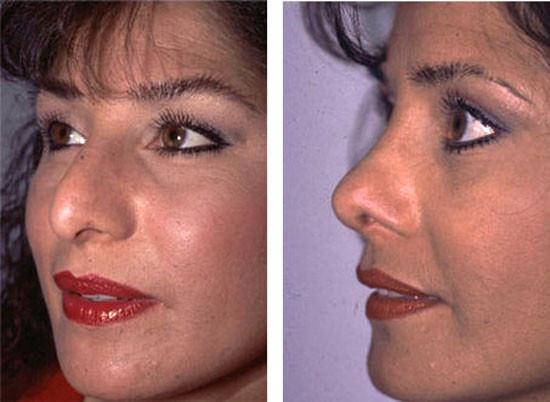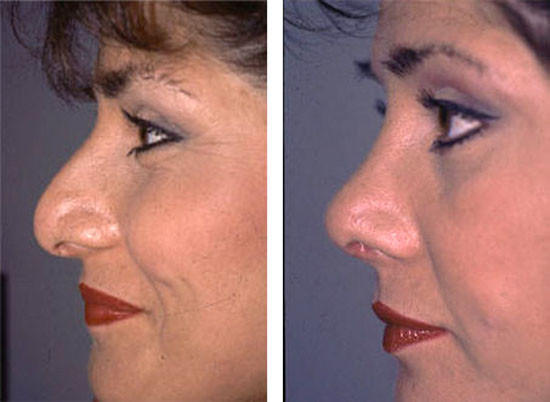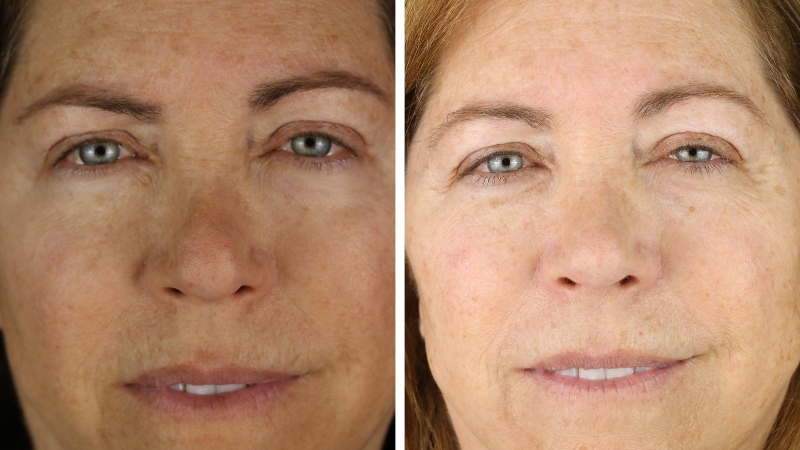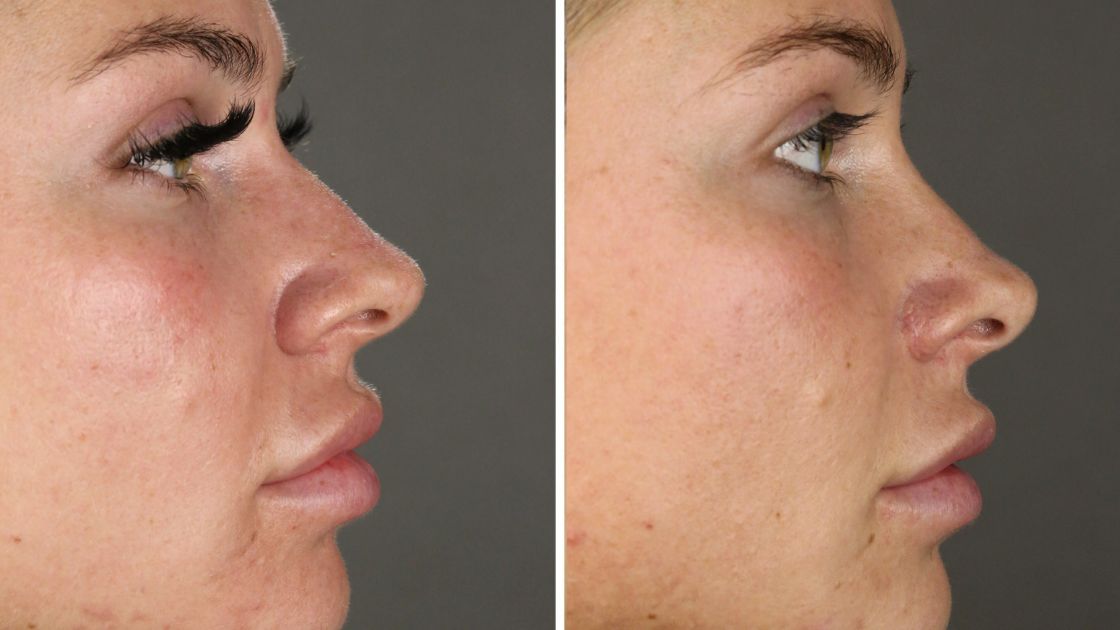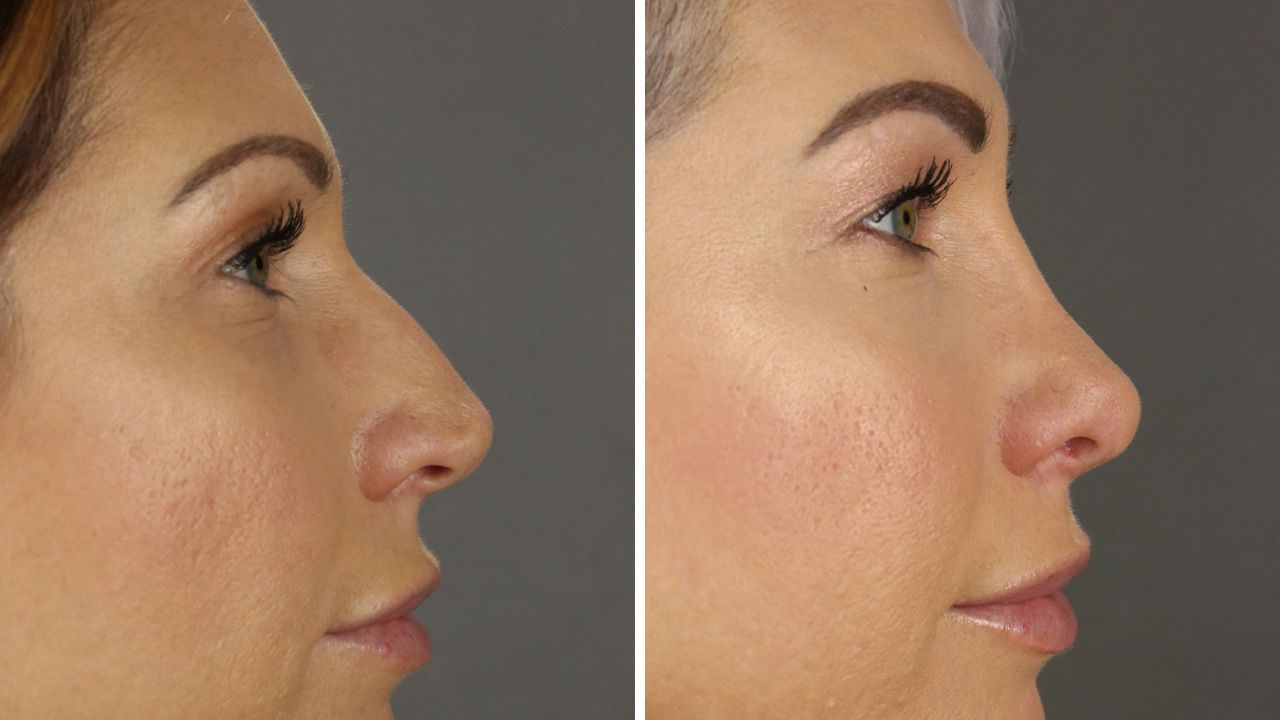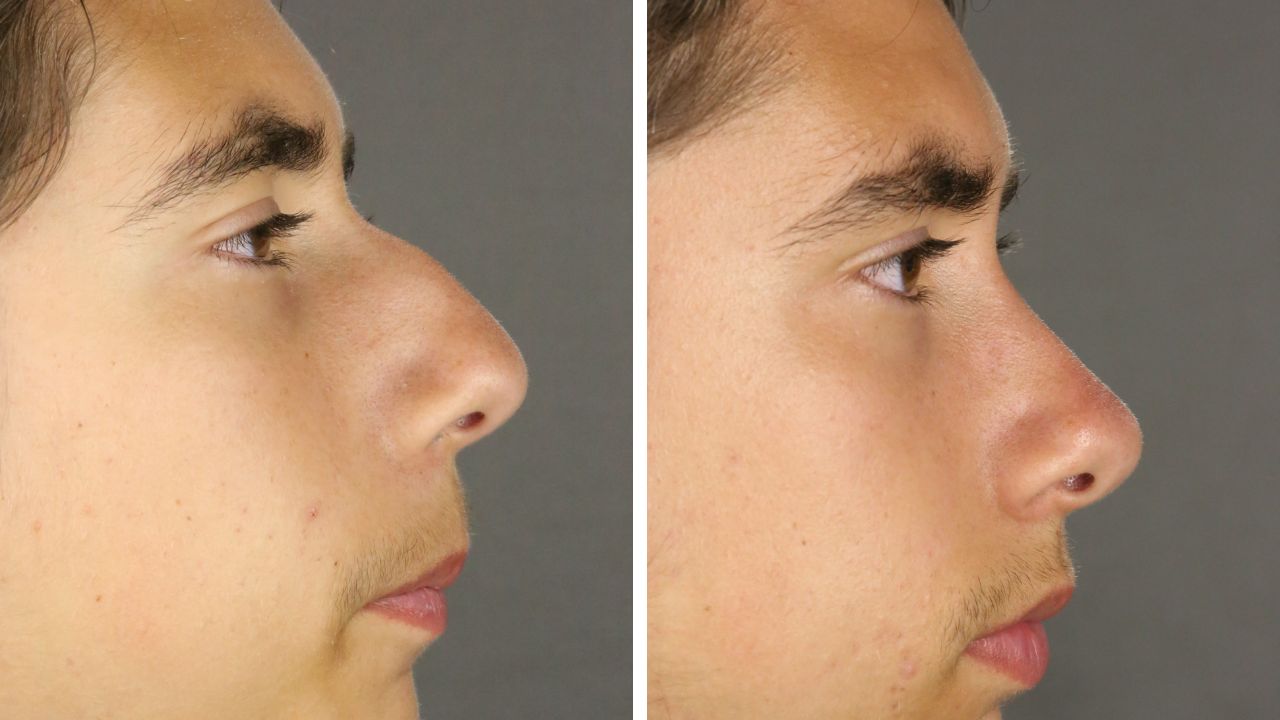The patient is a 28 year old woman who complained of a bump on the bridge of her nose and felt her tip was pinched. She also thought her nose didn’t go with her face. On examination, the patient had a prominent nasal bridge with poor projection of the tip which had minimal support. The nasal bridge was also too wide for the patient’s face.
Rhinoplasty Plan
The plan for this patient was to use open rhinoplasty to remove the bump of the nasal bridge and to build up the tip using cartilage from the septum.
Cosmetic Results
The patient was very happy with her cosmetic result and thought that her tip was more proportionate to the size and width of her face. She like that her tip was rotated slightly upward.
Open Vs. Closed Rhinoplasty
In closed rhinoplasty, all of the maneuvers are performed through openings within the nostrils and so there are no external incisions. Open rhinoplasty is performed with these internal incisions but, in addition, the nostril incisions are connected across the columella (the skin between the nostrils. The skin is lifted up and separated from the underlying tip cartilage. This gives very good exposure of the tip cartilages and more exact and more varied procedures can be used to modify these cartilages.
In this patient, open rhinoplasty was used to visualize the tip cartilages and use additional cartilage, taken from the patient’s septum to build the tip to make it more prominent and to widen it. Once the graft cartilage is harvested, it can be shaped to fit the desired tip width and can even be stacked to increase the tip projection further. Generally, the graft is made into a shield and oriented so that the narrower, lower part of the shield is within the columella at its upper portion. This area is referred to as the infratip lobule. As can be seen from the front facing photos of this patient, the infratip lobule was widened by the graft to gain a natural shape to the patient’s tip including making it less pinched too.
During open rhinoplasty, care is taken also to provide better support of the tip, the nostrils and the area above the tip to retain good breathing for the patient.
Tip Projection is Key
When looking at the nose from the side, an important goal in rhinoplasty is to have the nasal tip be the most foreward part of the nose. It is easy to see from this patients preoperative side view, that the tip is not as projecting as the bump on the lower bridge. So imagine if the bump is taken down! The tip will still be behind the bridge and that is why open rhinoplasty is necessary in this patient: to build up the tip. Another way of thinking about this issue is that if the tip is built up, less bump needs to be removed. That gives the rhinoplasty surgeon more latitude in deciding how much bump should be removed.
Open rhinoplasty can also be used in other circumstances. One other indication for open rhinoplasty is in the twisted nose (that’s an actual diagnosis!!). In these patients, there is a deviation of the septum that is not only on the inside blocking the airway but also is visible as a twisting of the nose. The open rhinoplasty approach can be used to better expose this twisted septum and correct it with different maneuvers which include weakening and bending the bent cartilage into the straight position and also grafting to keep the new straight cartilage in the straight position.
The More Complicated Teaches the Simple
These more complicated cases teach the rhinoplasty surgeon how to approach more simple rhinoplasties. For example, in this patient the cosmetic aspects of the procedure can be seen but the support required to maintain a good and open airway teaches us to continue to work on maintaining and even improving the airway in closed rhinoplasty.

